 |
 |
 |
| Missions | ||
         |
Philae
Lander Philae is the lander unit of ESA’s Rosetta Orbiter which had the task of landing on a comet, executing scientific measurements and sending the collected data to the Earth. The text on the original Rosetta Stone contained an order of Pharaoh Ptolemy V. and written in three different languages in 196 B.C. This was suitable to solve the secret of Egyptian hieroglyphs in 1922. Philae is the name of the Nile island where an Egyptian obelisk discovered in 1815, and the text on it helped in understanding the text on Rosetta. The analogy comes from this: Rosetta and Philae could help in discovering the secret of comets, learning the process of space genesis. The Rosetta spacecraft with Philae on its back had been launched by an Ariane 5 rocket from Kourou, French Guiana on March 2, 2004. After 10 years of maneuvering, at 500 million kilometers from the Earth, it approached the comet 67P/Churyumov-Gerasimenko. On November 12, 2014, it kicked off Philae which started a free fall of 7 hours and landed on the comet’s surface exactly where it was planned. The problem was that the harpoons did not work properly and could not fix the lander to the surface and caused its bouncing two times. The first bounce was done at the speed of 38 cm/s which was luckily less than the escape velocity of 44 cm/s. Philae rose up to 1 km from the surface and was falling down for 1 hour and 50 minutes, and after this second bump it rose again, flew for 7 minutes and finally landed on the comet’s icy, slippery surface at a rough, rocky and shady ground about 1 km from the original place with only two supporting legs from the three and a 30 degrees deviation from the perpendicular position. It started to work here immediately by sending data from all of its scientific instruments for about 60 hours. Then its primary batteries ran out, and owing to its unlucky position and the big distance from the Sun, its accumulators could not be properly charged, and it stopped working. Meanwhile the comet was continuing its move towards the Sun, the solar elements of Philae got more light, they could somewhat recharge the accumulators, and on June 19, 2015, the lander gave life signals. Hopefully, it can remain in live condition. The comet will reach its perihelion point in August, 2015, after that it will turn back and leave the Solar System. If everything goes well, Philae will provide in the near future valuable information about the material of the comet, and the increasing gas and dust radiation caused by the Sun. The main structural unit of Philae is a carbon fiber fortified plastic house to which the hexagonal platform is attached for the scientific instruments. The external surface is covered by solar elements. The overall volume is about 1 m3 and the weight is about 100 kg. Its most important component is the control and data processor (CDMS – Command and Data Management System) which was developed by the engineers of SGF Co. Ltd. (Space and Ground Facilities Co. Ltd.) and HAS Wigner Research Center for Physics in Hungary. Its detailed description can be found under the Products link. The intelligent Power Supply Subsystem was developed at the BME (Technical University of Budapest), Hungary. The onboard scientific instruments of Philae are the following:
2.July
2015
|
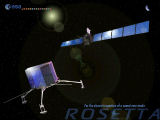 Rosetta and Philae after separation (work of artist) 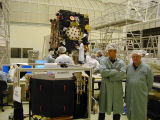 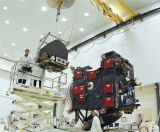 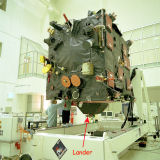 Rosetta and Philae integration at ESTEC 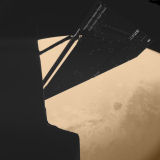 Image of MARS by the CIVA from Philaee |